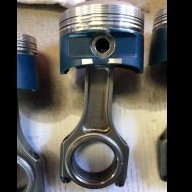Announcements
-
Similar Content
-
Latest Posts
-
I had issues with my car today after removing the rear bumper. The headlights aren't working when turning the stalk but high beams are working and the rear tail light where the reverse camera is wired up won't turn on when the stalk is activated, but the reverse camera, tail light indicator and brake light all seem to work. I checked the fuses they aren't blown. I think the reverse camera could have possibly gotten pinched but shouldn't be as there is a decent amount of room. I did use the lights and loom for the license plate from the new bumper but also tested the old one in case but made no difference. This isn't for a skyline also. Any ideas what it could be? It was working when I drove I'm pretty sure, then on my return home I noticed my headlights weren't working.
-
If we're going after market gauges, I'm a big fan of Australian made... Get some RedArc!
-
By hoodedreeper · Posted
Unless you're fortunate enough to buy a newer car, getting an older style plate to match your name/car is difficult because they've already been purchased. Unlike other countries, personalised plates are locked to the country and not region, so there can't be multiple versions of the same plate but with a different area code. Hope that helps -
By hoodedreeper · Posted
People use the numbers to make it look like letters to spell words/names, which is where the illegal spacing comes in. For example this GR Yaris
-






Recommended Posts
Create an account or sign in to comment
You need to be a member in order to leave a comment
Create an account
Sign up for a new account in our community. It's easy!
Register a new accountSign in
Already have an account? Sign in here.
Sign In Now